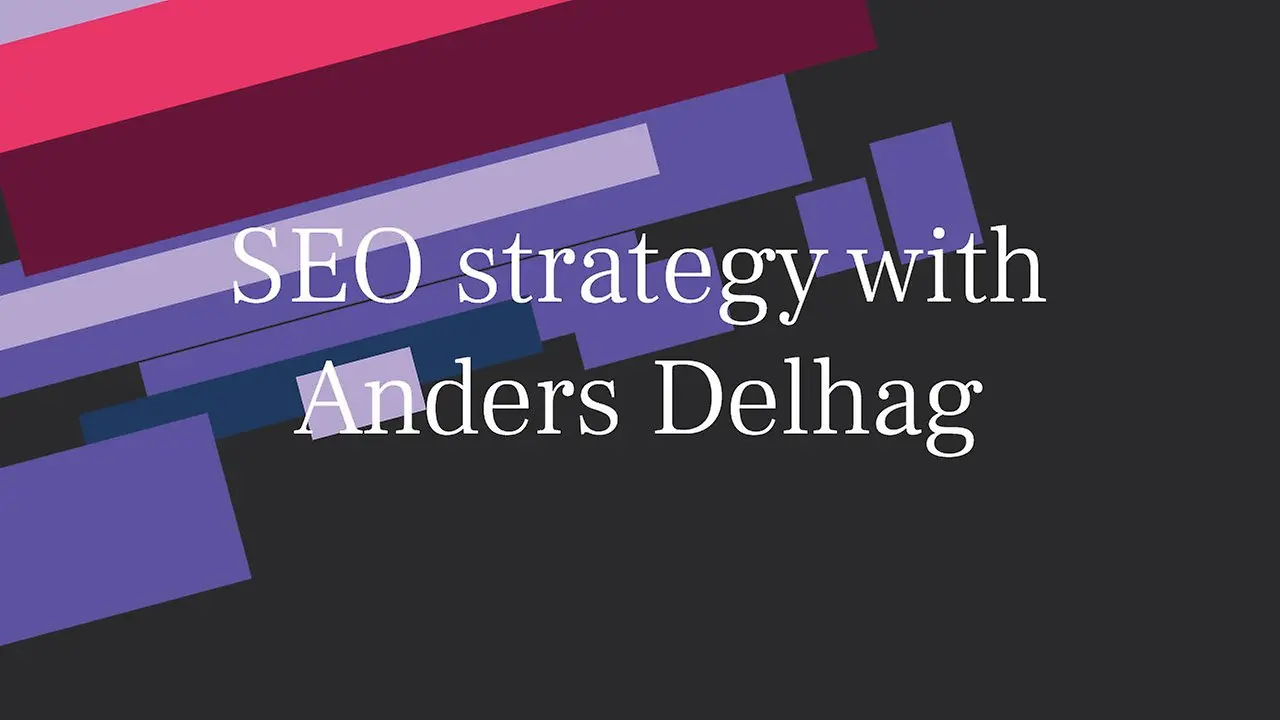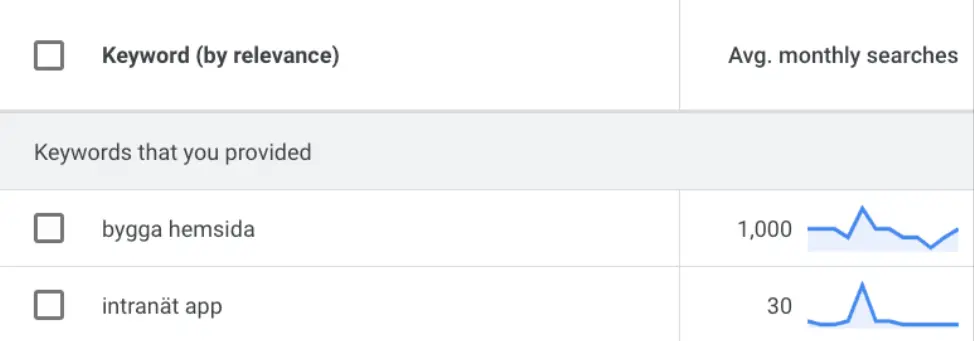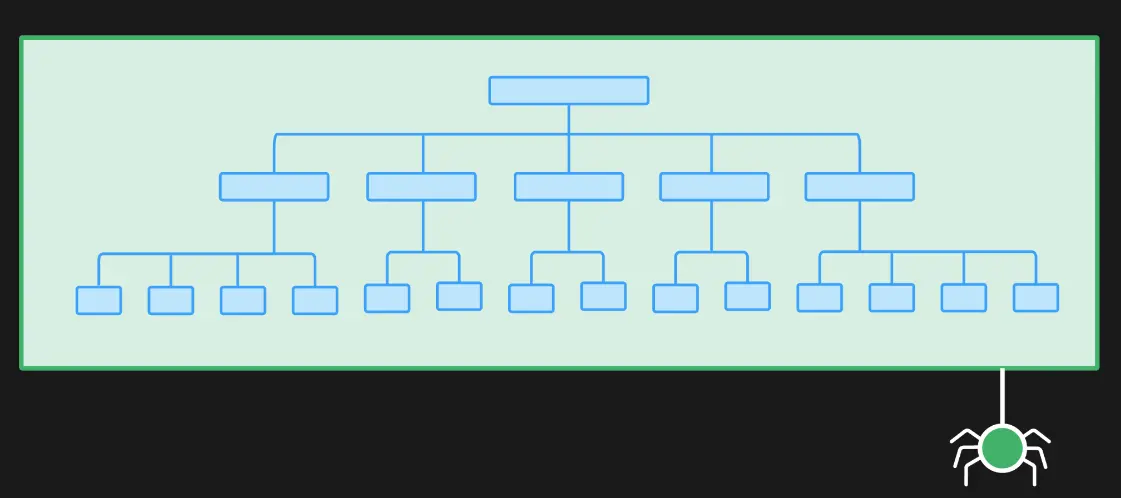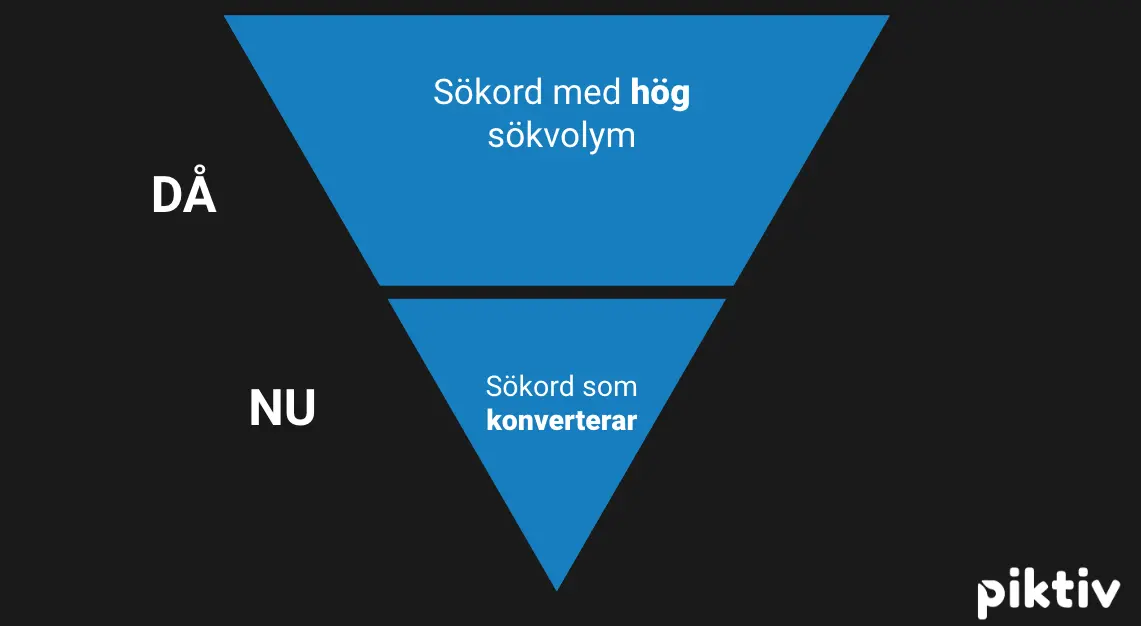Blog
A winning SEO strategy – 5 steps to success
Successful SEO requires a comprehensive strategy. What is important to appear high up in the search results varies over time, but something that is always just as important is to focus on user-friendliness. If you manage to make the user appreciate your content and want to stay on the site, you have come a long way. If you also follow these 5 simple steps, you will take your SEO to the next level.

1. Keyword analysis
Spending time identifying keywords that are important to your business is fundamental to success. What do people who might be interested in our products, services or the information we provide google? What pages do we want users to find? Once we have answered this, we analyze these pages and then assign them a main keyword. We then collect all the keywords we have identified in a list. It's important to remember that the knowledge and expertise on your topic is within your organization, so take advantage of it!
2. Content that converts
Now that the keyword list is developed, it's almost time to start working on the site. But first we need to prioritize where to start. A few years ago, it was natural to prioritize the keywords that had the largest search volume, that is, the keywords that most people google. This was probably also what many in the SEO industry recommended. Today, this approach is seen as rather outdated. It is not at all certain that the keywords with the highest volume are the most converting. So what is a conversion? Well, a conversion is what we want the user to do when they are on the site. It can be anything from buying a product, signing up for a newsletter, filling out a form or booking a meeting. What keywords do we have in the list where user intent is likely to lead to a conversion?
An example from Sitevision:
The keyword "build website" has 1000 searches per month and Sitevision delivers a CMS for websites to companies, organizations and the public sector.
The keyword "intranet app" has 30 searches per month and Sitevision delivers an intranet service where you can have the intranet with you wherever you go, in an app on your phone.

In this example, the recommendation is to prioritize "intranet app" despite the relatively low search volume. This is because the intention behind the keyword is more likely to lead to a conversion. This tells us that someone googling this term is interested in a service with an intranet in a mobile app.
But Sitevision also wants to be seen on searches such as "build website", some of those who google may come from a company, an organization or an authority?
Absolutely, but with high search volume often comes high competition. There are lots of players who have website tools as their main product and among those who google are many private individuals, i.e. not Sitevision's target group. In other words, it would take a long time and large resources for us to rank on this.
Prioritize by intention first and search volume second.
Now we can start optimizing each landing page for our chosen keywords.
Meta title
The page title is the one that appears in the search results and the one that the user clicks on to enter the site. So it is very important. To begin with, the page title should of course contain the keyword that the page focuses on. But preferably also a call to action.
What is a good call-to-action in a title then?
Depending on what the page is about, it could be "complete guide", "get started today" or similar. Because as important as it is to be at the top of the search results, it is even more important that people are actually interested and want to click on our search hit.
Meta description
The meta description is not actually a ranking factor for Google anymore, but it has another important purpose and is to make the search hit clickable and complement the title. Many people scan the search results for information that corresponds to the search and in the meta description you have the chance to tell with a few more words what those who click can expect on the landing page.
Headings and images
For headings, it is important that you have a main heading H1 that contains the keyword that is in focus, because then the user immediately understands that you have ended up in the right place. Then we divide the text into shorter paragraphs with H2 headings or subheadings to make it easy to read.
When it comes to images , it is good to name them with the keyword we want to appear on, so if, for example, we have an image that represents the intranet app, the image can be called "intranet app" and then get a so-called alt text or image description.
You can find this in the editing interface in Sitevision under settings for each image.
An image description helps both Google to understand what the image represents so that you can appear in image searches but also screen readers if the user cannot see.

3. Speed up
It's no secret that a slow site is a source of frustration for users. In a recent survey, users in the UK and US were asked about the importance of site speed. More than half of them said that they would have a negative attitude towards a company, organization or government agency with a slow site. In addition, problems with speed can lead to lost revenue. It has been calculated that an e-commerce that sells for SEK 100,000 per day loses SEK 2,500,000 per year due to a 1 second delay on the site. Thus, there is great reason to focus on getting the site to load quickly.
A simple way that you can do directly in Sitevision CMS is to convert resource-intensive images to WebP format, a right-click on an image in the media library and select "convert to WebP." It's not more difficult than that!
4. User-friendliness
A user-friendly site is highly valued by both Google and the user, so there is reason to spend time on this point.
For the sake of simplicity, we divide user-friendliness into two main areas: information and navigation.
Information
Say it in as few words as necessary to make the message clear. No one wants to sit and read through large amounts of text, most people scan the content with their eyes. That's why we collect the most important things we want to say in bullet points and/or bold text.
Navigation
A logical menu structure is essential for the user to find what they are looking for and stay on the site. It is also important from the search engine's perspective. If you want Google to find our pages and index them, they need to understand the structure.
Therefore, it is important that we build the site according to the rule that the home page is followed by main categories and then any subcategories for each of these. Simply put, a logical category tree.

5. Links
Click here to read more about intranets from Sitevision
Säffle municipality invested in social functions in the intranet, read more here.
You can find more information about Sitevision's mobile app here.
On the page https://www.sitevision.se/cms-for-intranat you can read more
Yes, this is indeed the case on many sites. Do you see the problem? If not, we'll get to that in a minute. Internal links are important, both to make the user stay and discover more of our content, but also to make the search engine understand how the content is connected.
So what's wrong with doing as in the example above?
Well, the part of a text that we choose to make into a link is called anchor text and it should be a keyword that is relevant to our business while "hinting" at what the user can expect when they click on the link. Which we cannot do when the anchor text is "Click here", "read more" or "here".
Therefore, we should instead set up our text links as in the example below:
Here you will find everything you need to know about intranets from Sitevision.
Also read about how Säffle municipality invested in a social intranet.
With Sitevision you also get the intranet in an app
We also make sure to link new content to existing relatable content so that we tie together topics into a whole on the site.
Summary of SEO strategy
SEO contains many parts and needs to be worked on continuously. You can never "get done" with SEO. Conditions change and algorithms are sharpened all the time.
However, if you follow these 5 points, you will come a long way and see both the ranking and the relevant traffic to your site increase. Good luck to you!
Tags
Share
You must be logged in to submit comments.
Comments are closed for this article
CMS for intranet
Increase engagement and strengthen the workplace culture
with a social intranet.
Quick to get started with ready-to-use templates
Gather strengths – integrate other systems
Secure and Swedish cloud service
Always nearby in the mobile app
User-friendly and web-based interface
CMS for websites
Create engaging websites with a focus on the digital
experience from start to finish.
Personalise more
Web analytics directly in the interface
Accessibility at its finest
Secure and Swedish cloud service
User-friendly and web-based interface







Comments